Difference between revisions of "Exotic leather"
m |
|||
| Line 55: | Line 55: | ||
Exotic leathers are either made from relatively rare animal species or from skin parts of animals that are rarely [[Tanning leather|processed]] into leather. Some exotic leathers are protected by the [[CITES - Convention on International Trade in Endangered Species of wild fauna and flora|CITES (Convention on International Trade in Endangered Species of wild fauna and flora)]]. [[Crocodile leather|Crocodile]] or [[Snakeskin|snake skin]] leathers are commonly addressed as leather. However, other exotic leathers like [[Fish leather|fish leather]], leather from [[Chicken leather|chicken legs]] or from [[Rumen leather|cow belly/stomach]] also exist. Depending on the culture, the definition of exotic leather, can differ. | Exotic leathers are either made from relatively rare animal species or from skin parts of animals that are rarely [[Tanning leather|processed]] into leather. Some exotic leathers are protected by the [[CITES - Convention on International Trade in Endangered Species of wild fauna and flora|CITES (Convention on International Trade in Endangered Species of wild fauna and flora)]]. [[Crocodile leather|Crocodile]] or [[Snakeskin|snake skin]] leathers are commonly addressed as leather. However, other exotic leathers like [[Fish leather|fish leather]], leather from [[Chicken leather|chicken legs]] or from [[Rumen leather|cow belly/stomach]] also exist. Depending on the culture, the definition of exotic leather, can differ. | ||
| − | Is exotic | + | Is exotic leather [[Leather quality|better]] than other standard forms of leather? Some exotic leather surfaces may [[Haptic|feel]] softer, hence making them more appealing, or they might have a very different look. [[Fur - Fur skin|Fur]] for instance can be particularly soft or have a unique colour. However, demand for leather is generally satisfied by the hides from animals that account for 90% of world meat production. In recent years, there seems to have been a growing trend for artificial man-made leathers, such as [[Imitation leather|vinyl leatherette]]. None of the exotic leathers offer superior quality, durability, resistance or other practical properties. Mostly, exotic leathers are unique mainly because of their texture, look and colour which makes them more valuable. |
[[Water buffalo leather]], [[buffalo leather]], [[Deerskin|deerskin]], [[Beaver fur|beaver fur]], [[Reindeer leather|reindeer leather]] or [[Elkskin leather|elkskin]] are not very common, but they are not exotic leather in the strict sense. | [[Water buffalo leather]], [[buffalo leather]], [[Deerskin|deerskin]], [[Beaver fur|beaver fur]], [[Reindeer leather|reindeer leather]] or [[Elkskin leather|elkskin]] are not very common, but they are not exotic leather in the strict sense. | ||
Revision as of 15:36, 28 February 2017
The earth has more than 5,000 species of mammal, about 50 of which provide hides for leather production. Most of the world's processed leather comes from animals that are reared for meat and/or dairy consumption. Besides other uses, the hides and/or skin from animals such as cows, zebu, water buffalo, sheep, goats and pigs are used for by-products. This makes up more than 90% of the world production. Leather derived from any other animals can be considered ‘Exotic Leather’.
Cow leather - goats - pigs
| species | percentage leather production |
|---|---|
| cows, calves, water buffalos | 65-70% |
| sheep | 10-12% |
| goats | 8-10% |
| pigs | 5-7% |
Exotic leathers are either made from relatively rare animal species or from skin parts of animals that are rarely processed into leather. Some exotic leathers are protected by the CITES (Convention on International Trade in Endangered Species of wild fauna and flora). Crocodile or snake skin leathers are commonly addressed as leather. However, other exotic leathers like fish leather, leather from chicken legs or from cow belly/stomach also exist. Depending on the culture, the definition of exotic leather, can differ.
Is exotic leather better than other standard forms of leather? Some exotic leather surfaces may feel softer, hence making them more appealing, or they might have a very different look. Fur for instance can be particularly soft or have a unique colour. However, demand for leather is generally satisfied by the hides from animals that account for 90% of world meat production. In recent years, there seems to have been a growing trend for artificial man-made leathers, such as vinyl leatherette. None of the exotic leathers offer superior quality, durability, resistance or other practical properties. Mostly, exotic leathers are unique mainly because of their texture, look and colour which makes them more valuable.
Water buffalo leather, buffalo leather, deerskin, beaver fur, reindeer leather or elkskin are not very common, but they are not exotic leather in the strict sense.
Bison - Water buffalo - Deer
The leather of the following species are "exotic leather":
- Alligator leather
- Alpaca fur
- Antelope leather
- Armadillo leather
- Bird leather
- Bull testicles
- Caiman leather
- Camel leather
- Carpincho leather
- Cat fur
- Chicken leather
- Crocodile leather
- Dog leather
- Donkey leather
- Elephant leather
- Fish leather: Eel, shark, salmon, moray eel, stingray and many others
- Frog leather - Toad leather
- Giraffe leather
- Hippo Leather
- Horsehide - Horse leather
- Kangaroo leather
- Llama Fur
- Lizard leather
- Ostrich leather
- Pangolin leather
- Peccary leather
- Rumen leather
- Sealskin leather
- Snakeskin
- Turtle skin
- Walrus leather
- Yak leather
- Zebra hide
These leathers are not necessarily exotic leather in other countries and cultures: Kangaroo leather, horse leather or ostrich leather.
From a lot of species, the skin is processed to leather, while the hair is obtained (hides, furs). For example, cow hide, sheepskin, rabbit fur, sealskin or beaver fur.
Video about leather of different animal species
Leather of different animal species - Exotic leather
Additional information
- CITES - Convention on International Trade in Endangered Species of wild fauna and flora
- Taxidermy - Hunting trophies - Mounted animals

















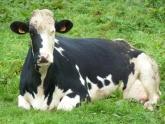
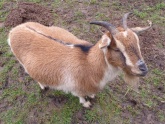
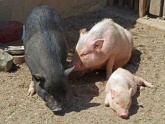
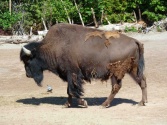
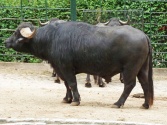

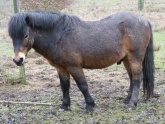
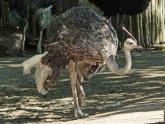


 a kotori web solution
a kotori web solution